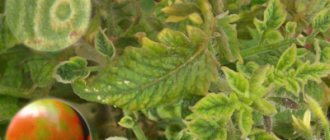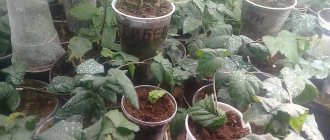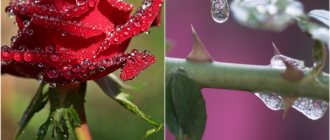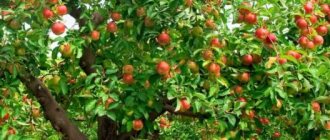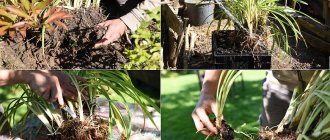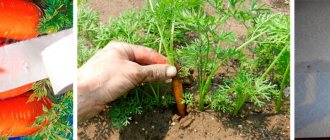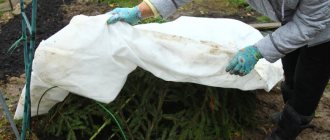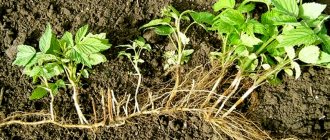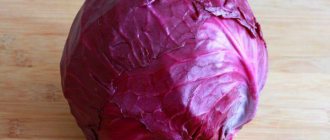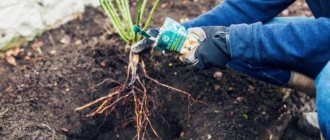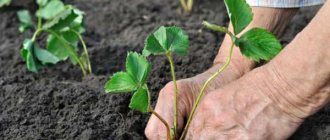What are aphids in the garden?
Small parasitic individuals appear in vegetable gardens during the planting period. The most successful place for reproduction is an infected bush or seedling. Also, transfer can be ensured by the wind, ant larvae that raise aphids and feed on the products of their vital activity. Sometimes purchased and brought soil may contain parasite larvae.
Aphids have a soft transparent body without a chitinous shell. The color is black or green, sometimes with a white tint. The size of one individual reaches 2 mm, so it is difficult to notice. Insect colonies are located on foliage, leaves of plants and seedlings, and at the base of flowers. Pests have wings and long thin legs. Aphids can jump from one plant to another and crawl along petals.
Individuals lay eggs in winter so that by spring the colony is replenished with new workers. Insects are a parasitic species and do not provide anything useful to plants. Scientists have also identified a separate species of aphids that reproduces indoors - on flowers, near ant holes.
An affected plant can be identified by several signs:
- It fades and dries up during the period of flowering and growth.
- The leaves acquire a yellowish tint, different from the green range of colors. They can be twisted and wrapped into a cone at will.
- The fruits are always underdeveloped and grow in a reduced size.
- The branches are deformed, the buds have a yellow coating compared to other healthy plants.
- Sometimes there is a white film on the fruits and buds of fruit trees.
The new offspring of aphids begin to actively feed in the summer. Therefore, it is recommended to immediately treat all healthy plants and destroy insects in already affected areas.
Features of the insect
Common aphid
The appearance of a harmful insect is familiar to literally every person who is interested in growing various cultivated plants. This is a small insect, up to 2 mm, its body color varies from light green to completely black. Belongs to the order Hemiptera.
The number of aphid species cannot be counted; they number in the thousands. They settle on the plant they like very quickly and, spreading with enormous speed, destroy any cultivated plants that suit their taste.
The aphid has a fleshy body and thin long legs, but this does not give it an advantage in movement. The insect moves very slowly and is easy to crush. Aphids first appear in early spring, when the first leaves and shoots appear in the garden, which are considered the most preferred food for the dangerous insect.
Aphid eggs
Having grown and become stronger, they begin to actively reproduce. Females lay at least 20 eggs daily, from which new individuals quickly emerge. The next generation of aphids with wings appears, they are already able to fly to various plants, and wingless individuals are carried by ants. In this case, the problem of how to get rid of aphids will be very acute.
The fight against dangerous insects is a necessary measure, since the insect occupies new territories in record time, causing enormous damage to growing crops and threatening future harvests. It is noteworthy that the type of aphid depends on what crop they can damage. Some people prefer one particular product or plant, while others can live on all the plants and flowers in the garden.
Traditional methods of fighting aphids
Home remedies are safe and effective. When there are few bugs, you can collect them manually using a damp swab or soaked in ammonia.
Ammonia solution
Apply it every 1-2 days until the insects disappear. In addition, this is additional fertilizer for trees. Take warm water, 1 bucket and dilute shavings of one piece of laundry soap there, then add about 5 cups of 10% ammonia.
Garlic
For the tincture, mix:
- liquid soap – 5 g;
- vegetable oil – 10 g;
- crushed garlic cloves – 6 pcs.;
- water – 500 g. For processing, take 60 ml of tincture and dilute it in a 2 liter bottle.
2nd option: add 200 g of chopped garlic to 1 liter of clean water. To infuse, place in a dark and cool place for 7 days. Before use, filter and dilute with water (10 l).
Tar soap solution
Rub 10 g of soap and dilute with a liter of water.
Wood ash
Take 300 g of ash, pour boiling water and boil for half an hour. Pour into water (10 l).
Pour ash into a bucket of water (2 glasses are enough), leave for 24 hours and add grated laundry soap, ¼ part of a piece.
Treatment with baking soda solution
Dilute grated laundry soap (1 spoon) with 2 liters of hot water. When it cools down, add 4 tablespoons of soda.
Coniferous infusion to combat aphids
Place pine needles (2 kg), filled with 8 liters of water, in a cool and dark place for 1 week. Dilute: solution – 1 l, water – 10 l.
Infusion of citrus peels
Take 100 g of fresh peels and pour hot water (1 l). Leave for 3 days.
Other ways to control aphids
200 g of onion peel and 1 handful of orange or lemon zest. Or: pour 1 liter of clean cold water into 50 g of husk and 2 tablespoons of liquid tar soap.
Where insects move, sticky tapes are attached to catch flies, and the trunk is covered with a skirt for which they take foil.
Children's washing powder (1 spoon) and ammonia (4 spoons) for half a bucket of water.
Herbal infusions
The fight against aphids will not be complete without the use of natural repellents - herbs.
- Recipes involve adding dry herbs to 10 liters of water.
- Potato tops, 1 kg and laundry soap, 35 g.
- Dandelion. If the leaves are 0.4 kg, the roots are 0.2 kg. Leave for 2-3 hours in water.
- In another recipe, parts of the plant are crushed with 200 g of garlic, pepper and dry mustard is added (1 spoon each).
- 1 kg of chamomile or yarrow with liquid soap (1 spoon). Pour a liter of water and boil. Leave for 12 hours.
- Marigolds - half a bucket and add warm water to the top. Infusion – 2 days. Sometimes they add washing powder, 1 spoon.
- 5 kg of fresh tomato tops or 2 kg of dried ones. Cut and cook for half an hour. The cooled product is filtered and 3 liters of broth are added to 10 liters of water, adding 30 g of laundry soap.
- Shampoo (2 spoons) is added to dry tobacco leaves (200 g) and diluted in half a bucket of water. Leave for 2 days.
- To repel aphids, plant mint, a bed of fennel, coriander and Dalmatian chamomile. If there are bird cherry and viburnum bushes or flower beds with begonias and petunias, nasturtiums and mallow growing nearby, then some will move to these plants.
Effective ways
Folk remedies have maintained their popularity among gardeners for many years. Their main advantages are absolute harmlessness, low cost and availability. You can read about this in the material “The best folk remedies for combating aphids (part 1).”
Biological drugs are not far behind chemical ones. A properly selected product can completely eliminate a colony or ensure the non-viability of subsequent generations of pests.
In addition, the substances have selective destructive activity and are safe for people , beneficial insects and animals.
The most effective method has long been recognized as chemical. Ease of use, availability of drugs, guaranteed excellent results - all this allows chemical insecticides to take first place in terms of effectiveness. The fly in the ointment can be considered the negative impact on the environment and the relatively high cost of funds.
Pest control is a complex process, and aphids are one of the most harmful insects. Next, you will learn how to treat aphids and much more.
Mechanical methods of getting rid of aphids
Using mechanical methods that are safe, cheap and widely available, you can control pest colonies in your garden. Insects are destroyed by first collecting them with your hands or washing them off with water.
If cherry aphids are infested, the upper parts of the shoots are removed, and parts of the plant infested with the pest are sprinkled with bone meal.
A labor-intensive but effective way is to use adhesive tape. Aphids are collected from the plant with a piece of tape (provided that colonies have not yet appeared). This method can only remove insects that have been detected, but it will not be possible to prevent their reappearance.
Mechanical methods
Mechanical methods involve the use of one's own forces. So, the first thing you need to do is try to collect the bugs by hand. Carry out this procedure only with gloves.
In the second stage, you will need to trim off all severely affected parts. And at the last stage, a shower is used, in which a stream of water, for example, from a hose, is directed at the plant, so the insects are collected on the ground and do not return back.
If it is a flower in a pot, use running water. It should be remembered that the water jet should not be too strong so as not to cause harm. Also, when using a hose, make sure that insects with water pressure do not fall on neighboring bushes and flowers.
Plants in the fight against aphids
Nettle and herbs (coriander, basil, fennel, etc.) attract birds and insects that feed on aphids to the site.
Repellent plants
There are plants that repel pests with phytoncides, these are:
- marigold;
- chamomile;
- onion;
- lavender;
- pyrethrum.
By planting such plants close to crops that require protection, the appearance of aphids can be prevented.
Lavender is planted to repel aphids.
Plants that attract aphids
Other types of plants, attracting aphids to themselves, thereby protect the crops, diverting attention from them.
- bird cherry;
- viburnum;
- Linden.
Flowers:
- nasturtium;
- mallow;
- poppy;
- cleome
Varieties of aphids
Black aphid
There can be a huge number of aphid species; they differ in body shape and color, as well as “taste” preferences. The color of the aphid body directly depends on the plant on which they prefer to parasitize. There are green, whitish, brown and black specimens of the insect:
- green (this color most likely belongs to individuals that settle on young shoots and shoots and feed on newly emerging leaves);
- black aphid (otherwise called universal, since it has no special preferences among plants);
- whitish (also called “house aphid”, prefers to parasitize indoor flowers and plants);
- floral (settles exclusively on ornamental crops and flowers).
It is almost impossible to list all the varieties; there are thousands of them all over the world. Aphids can be wingless or winged; the speed of spread of insects throughout the area directly depends on this fact.
Chemicals
Agricultural methods for killing aphids include the use of pesticides and various forms of chemicals. Compared to other control options, they are a dangerous activity, as they can harm beneficial insects. For comparison, here is a table:
| Method | Advantages | Flaws |
| Use of chemicals | Rapid defeat, seasonal effect | Danger of poisoning beneficial insects |
| Application of smoke | Penetrates well under the bark. Best used in autumn | Temporary nature of the action |
| Use of protective plants | Natural method, environmentally friendly | No |
| Herbal infusions/decoctions | Environmental friendliness | Short action |
| Attracting insect enemies of aphids to the site | High probability of aphid destruction | Temporary nature of the action |
| Attracting Birds | Best aphid control, long lasting effect | No |
Karbofos
A product that kills insects and clears the area of bad parasites. The active ingredient is malathion. Karbofos is available in the form of emulsion, granules, powder, tablets.
The solution is highly concentrated. When working with it, you must follow safety rules. The insecticide contains odorants with an unpleasant odor. Inhalation of these particles has a detrimental effect on the human respiratory system.
For preparation and use it is important:
- The prepared solution is toxic, use all of it. Do not store.
- All green parts of plants need to be treated.
- Do not use on flowering fruits and bushes.
- Do not use more than 2 times within 3 months. Use during the warm season when insects are active.
Insects and their larvae die only from exposure to poison. The first results are noticeable after 5-6 hours. The validity period after spraying is up to 2 weeks.
Aktara
A neonicotinoid chemical that destroys nicotinic acetylcholine receptor cells. The nervous system of insects is destroyed. The active substance is thiamethoxam. Penetrates into the leaves of green plants, but does not enter the fruits. Aphids that eat foliage are poisoned and die.
- Water the plant and distribute the substance onto the foliage 30-40 minutes after watering.
- Treat the upper and lower stems 2-3 days after the initial application.
- Validity period is 3-4 weeks, up to 2 months when cultivating the soil.
Do not use this product on a regular basis - it causes resistance in pests. Aphids get used to the substances and develop resistance. Ineffectiveness is noticeable 6-9 months after 2-3 times of using Aktara.
The poison kills larvae that are in the feeding stage. The root ball is wetted evenly. Pesticides are washed off gradually after each watering. The solution can be combined with Zircon, Epin, Amulet.
To prepare the solution, you need to calculate the consumption for each plant separately (see the section “Features of working with different plants”). The liquid form of the poison is available in 9 ml bottles. There are ampoules of 1.2 ml. The suspension has a concentration of the active substance thiamethox at 240 g/l. The total consumption is 4-5 g per 10 liters of water.
Wofatox
A contact insecticide-acaricide has two active ingredients - bifenthrin and imidacloprid. Designed for comprehensive destruction of insects and pests of agricultural crops. The product is used as follows:
- The norm is determined for 5-10 liters of water.
- For spraying plants, use during the growing season before flowering or after harvest.
- Against parasites, you can introduce a solution into the soil at the time of planting.
- The ampoules are mixed with 3 kg of finished bait - grain, dirt.
Before packing the grain, it is necessary to infuse the bait for 5 hours. Apply into the soil 3-4 cm deep.
Spark
The drug can be used at any time before and after harvest. The active ingredient is Avertin N. Available in a 10 ml bottle and 5 ml ampoules. For each type of plant, a certain consumption is used. The drug in tablets can be used for fruit trees. Fights against parasites and insects such as:
- fruit path;
- mole;
- cherry fly;
- aphid;
- leaf rollers and others.
To prepare a general working solution, use 1 tablet per 10 liters of water. Application for fruit trees, shrubs and vegetable seedlings.
Fitoverm
It has an intestinal contact effect and is effective in controlling pests and insects of various types. Used for treating garden plants and flower beds. The consumption of the measure is determined by the instructions:
- ampoules of 4, 2, 5 ml;
- bottles of 20 ml.
The substance belongs to hazard class 3, so the poison is used before or after harvest.
Fufanon
The drug is an analogue of Karbofos. The active substance is malathion. It has a wide spectrum of action, suitable for berries and fruit crops. Fufanon affects the intestinal system of insects. To prepare the solution you need:
- Open the 5 ml ampoule.
- Mix the contents with 1-2 liters of water.
- Stir and add water to 5 liters of total quantity.
Plants should be sprayed in dry, windless weather before sunrise and after sunset. The duration of the drug is 10 days.
Tanrek
A cool systemic product that is suitable for all crops, fruit trees and flowers. A solution is created for home use. Effective at low temperatures, resistant to rain and snow.
- For cucumbers, tomatoes and flowers, the consumption rate is 5 ml/10 l of water.
- For currants and apple trees, 3 ml per 10 liters of water.
- The water-soluble concentrate may contain from 2-5 mg of the active substance imidacloprid.
Tanrek destroys and protects plants for a long time.
Types of aphids and their negative effects
Green aphid
About a third of all aphid species live in Eurasia. The following species are most widespread on the European continent:
- green;
- black;
- cotton;
- Helichrysaceae.
Description of varieties
Black aphid
Representatives of green aphids can be found on any plant. These parasites prefer fruit trees and shrubs, as well as large perennial flowers and herbs. Among garden crops, green aphids mainly attack nightshade plants - they can be found on potatoes and tomatoes.
Black aphids live in vegetable gardens, attacking any low vegetation - from beets to legumes. In addition, aphids attack berry crops and some ornamental plants. Moreover, these crops may not have a garden “registration”. For example, black aphids readily feed on the juice of physalis and tuberous flowers (irises, callas); its larvae can be found on the tender leaves of anemones.
Cotton aphids are also an inhabitant of the vegetable garden. The result of her activities is low yields of melons and pumpkin crops.
Cotton or melon aphid
The cotton aphid poses a particular danger to cucumbers.
Helichrysous aphid
The Helichrys variety prefers crops with large seeds. Trees of the Prunaceae family - plum, sloe, cherry plum, etc. - are primarily at risk. Representatives of this species also suck juice from apple trees, peaches, apricots, viburnum, and linden.
Aphid migration methods
Aphids on garden plants
During the season, aphids do not migrate. Towards the end of summer, the first males appear in aphids and subsequent generations may contain both wingless and winged insects that are already capable of flying from plant to plant.
One of the last generations of aphids, immediately after migrating to a new place, lays eggs, which overwinter and insects emerge from them in the spring, occupying a new “territory.”
Damage from aphids
Large pest colony
Aphids pose a danger to young plants and shoots. By sucking out nutrients and cell juices, it can significantly weaken the plant and slow down its growth rate. In addition, aphid saliva is poisonous to the plant (moreover, it is not the secretions themselves that are poisonous, but the toxins of the fungi that appear on the plants thanks to it).
Its negative impact is complex:
- plant foliage curls and becomes deformed;
- shoots die;
- growth stops.
Viral and fungal diseases can be transmitted from plant to plant through the saliva of aphids. Infections with viral diseases in 90% of cases occur due to aphids. Ants, picking up the sweet secretions of aphids (honeydew) and feeding on them, themselves become carriers of the virus on their paws. Aphids also harm bees, since they can collect its honeydew, mistaking it for nectar.
If you do not use any methods of action against aphids, after 2-3 generations you can forget about a good harvest. Let's look at the various methods for controlling aphids currently in use.
Prevention of aphid control
It is better to prevent an aphid attack on the garden. To do this, observe the following preventive measures:
- Inspect all new seedlings and check for parasites.
- Plant plants near the beds that aphids do not like. They will scare her away.
- Also plant carrots, parsley, and dill; the hoverfly loves them. She feeds on aphids.
- Keep ant infestation to a minimum. They are just scamming her.
- Hang feeders and bird houses. They feed on adults and their larvae.
- Feed your plants carefully. Aphids choose those that are overfed or weakened.
- Weed the beds regularly, loosen the soil and mulch it.
Save and share:
Signs of plant infestation by aphids
If you suspect that aphids have appeared in the garden, you need to carefully check the suspicious plants. Typically, aphids settle and actively work on the underside of the leaves of the affected plant. They can also be observed on buds, young shoots and even on the soil of the plant.
It is not difficult to determine the infestation of aphids; this may be indicated by:
- twisted yellow leaves with “nodules”;
- deformation of shoot tips;
- ugly, not fully developed flower buds;
- sweet secretions that stick to the fingers on the leaves and branches of plants.
A large number of ants in the area may also indicate the presence of aphids. The fact is that ants are very fond of the dew secreted by aphids and are ready to protect it and transfer the insect larvae to new, uninfected plants.
Aphids can attack a wide variety of plants. Currants, fruit trees, bulbs and legumes are considered the most preferable. In addition, aphids attack ornamental plantings, flowers, and even houseplants in pots.
Additional tips and tricks
Before purchasing a seedling or seedling, inspect the roots and foliage (if any). Some trees are already infected. To eradicate small numbers in the future, you need to fertilize and clear the soil before planting. Treatment is expected every season before fruiting.
In conclusion, it should be noted that all products must be selected individually, taking into account the age of the plants. Each type of chemical is available in different forms, so the preparation of solutions must also be carried out according to the instructions.
Features of deliverance in the garden
Below are some measures that can help get rid of aphids in the garden:
- Distinguishing between different types of plants. You can plant options that are attractive to aphids at a considerable distance from those crops that require additional protection from pests. The presence of begonias, nasturtiums or soporific poppy on the site will most likely divert the attention of these insects from other plants. Of the trees, pests prefer to settle on viburnum or linden; if the majority of the population is concentrated on these species, then it will be much easier to find and destroy it.
- Sparrows, tits, kinglets, robins and some other breeds of small birds very often hunt aphids, since they are ideal food for chicks. If there are large populations, birds themselves can pay attention to the area and help in destroying pests, but sometimes they need to be additionally attracted, for example, by installing feeders. However, it must be taken into account that many of them feed on tree fruits, so they can both help and harm.
- Fertilizers, especially the nitrogen type, should be used extremely carefully, since feeding plants with them can lead to a significant spread of aphids, whose attention will be attracted by the abundance of young and fresh greenery.

